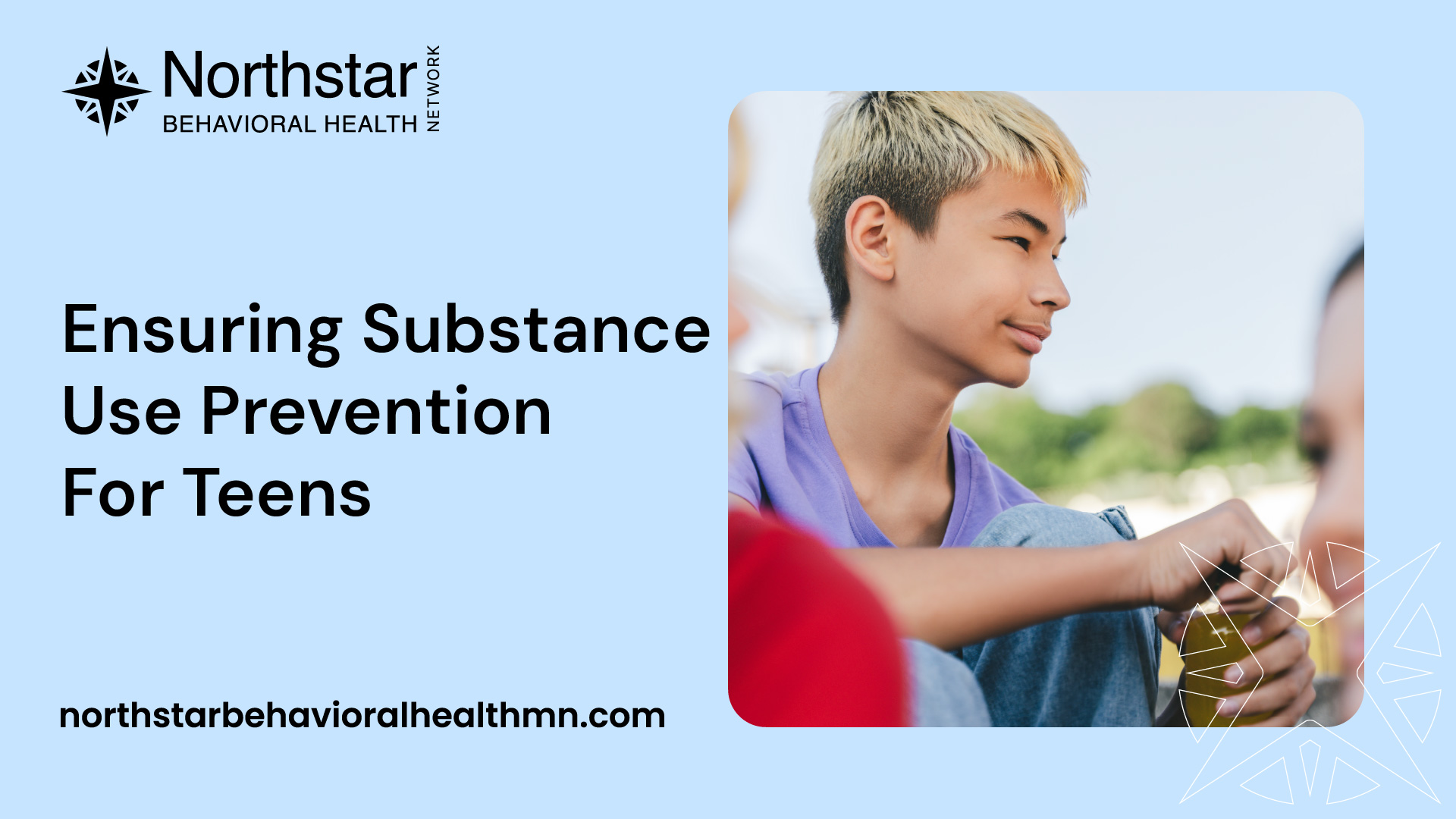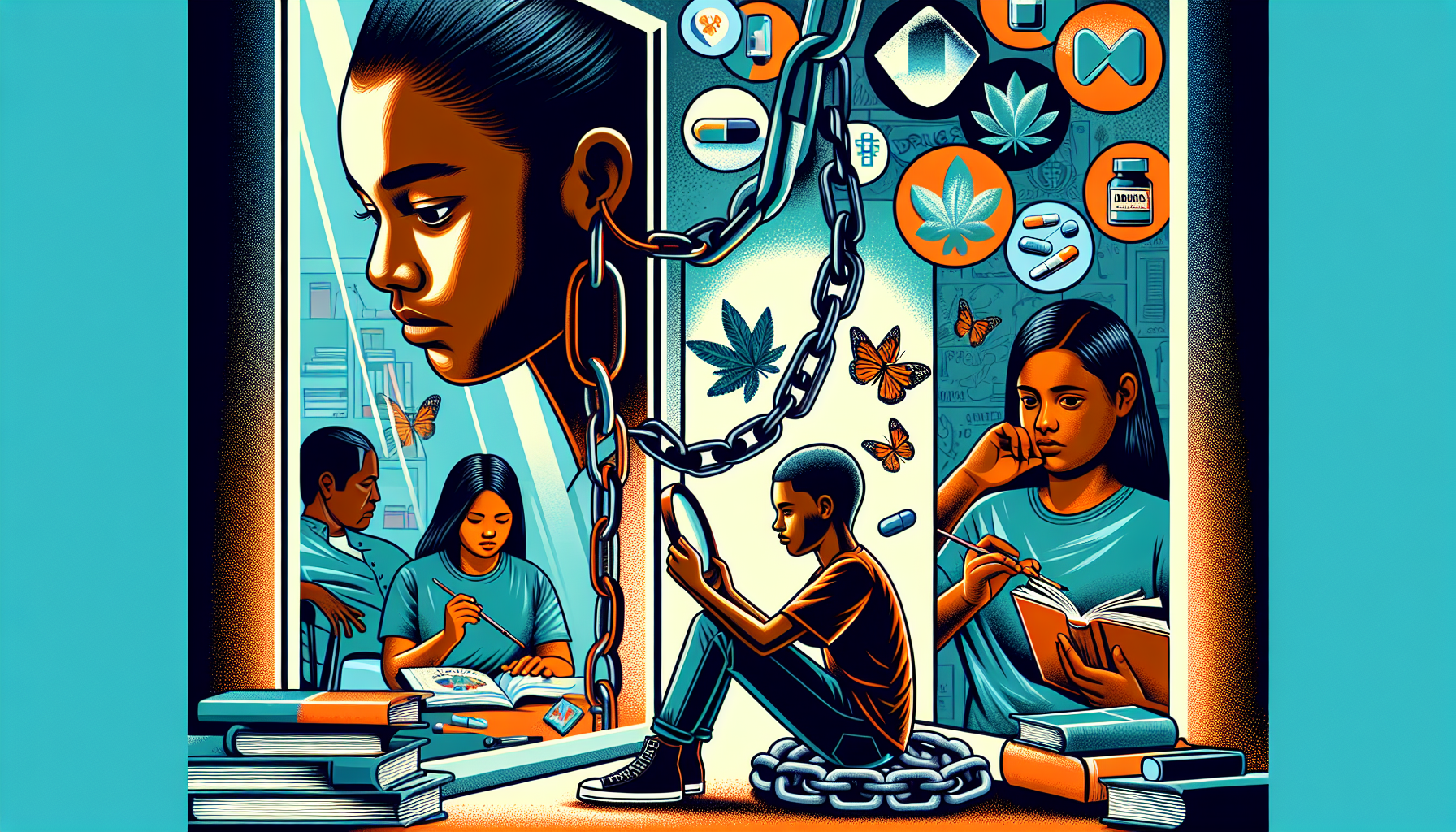September 2, 2024
Ensuring Substance Use Prevention For Teens
Discover strategies to engage and empower the next generation.


The Importance of Substance Use Prevention
Substance use prevention is a critical aspect of promoting the well-being and health of individuals, especially teenagers. Understanding the issue and recognizing its impact on teens is essential in developing effective prevention strategies.
Understanding the Issue
Substance use refers to the consumption of drugs or alcohol in a way that can be harmful to individuals physically, mentally, and socially. It encompasses a wide range of substances, including illicit drugs, prescription medications, and alcohol. Substance use can lead to addiction, impaired judgment, risky behaviors, and a decline in overall health.
Teenagers are particularly vulnerable to the negative effects of substance use. Their brains are still developing, making them more susceptible to the addictive nature of drugs and alcohol. Substance use during adolescence can have long-lasting consequences on their cognitive abilities, academic performance, and emotional well-being.
Impact on Teens
Substance use has a profound impact on the lives of teenagers. It can disrupt their education, damage relationships with family and friends, and hinder their future prospects. Some of the key impacts of substance use on teens include:
- Academic performance: Substance use can lead to a decline in academic performance, as it affects concentration, memory, and motivation. This can result in lower grades, missed opportunities, and limited future prospects.
- Physical and mental health: Substance use can have detrimental effects on both physical and mental health. It can lead to an increased risk of accidents, injuries, and the development of mental health disorders such as anxiety and depression.
- Social and emotional well-being: Substance use can negatively impact a teenager's social life and relationships. It may lead to isolation, conflicts with family and friends, and a loss of interest in activities they once enjoyed.
- Increased risk-taking behaviors: Substance use is often associated with engaging in risky behaviors such as unsafe sex, driving under the influence, and involvement in criminal activities. These behaviors can have severe consequences and put teenagers at risk of harm.
- Higher likelihood of addiction: Teenagers who engage in substance use are at a higher risk of developing addiction later in life. This can lead to a lifelong struggle with substance abuse and its associated difficulties.
It is crucial to address the issue of substance use prevention among teenagers to mitigate these negative impacts and empower them to make informed choices. By implementing effective prevention strategies, we can create a supportive environment that encourages healthy behaviors and helps teenagers avoid the pitfalls of substance use.
To learn more about substance use prevention and recovery, check out our articles on resolving to be sober and recovery gifts that support sobriety.
Challenges in Reaching Teens
When it comes to substance use prevention messages, there are several challenges in effectively reaching teenagers. It's crucial to address these challenges in order to ensure that teenagers receive the necessary information and support to make informed decisions about substance use.
Fewer Teens Receiving Substance Use Prevention Messages
One of the primary challenges is the decreasing number of teenagers who receive substance use prevention messages. Many prevention programs and campaigns primarily target younger children or adults, overlooking the importance of reaching teenagers during this critical stage of development. As a result, teenagers may not receive the necessary education and guidance to make informed choices about substance use.
To address this issue, it's crucial to develop targeted prevention messages specifically tailored to teenagers. These messages should be age-appropriate, engaging, and relevant to their experiences and interests. By delivering substance use prevention messages that resonate with teenagers, we can increase their receptiveness and ensure that they receive the information they need to make healthy choices.
Barriers to Effective Communication
Another challenge in reaching teens with substance use prevention messages is the presence of various barriers to effective communication. Teenagers may face barriers such as social stigma, peer pressure, and a sense of invulnerability that can hinder their willingness to engage in conversations about substance use.
To overcome these barriers, it's important to create a safe and non-judgmental environment where teenagers feel comfortable discussing these topics. Encouraging open dialogue and active listening can help build trust and foster a sense of understanding. Additionally, providing accurate and evidence-based information about the risks and consequences of substance use can help dispel myths and misconceptions.
Utilizing various communication channels that resonate with teenagers, such as social media platforms, online forums, and interactive workshops, can also be effective in breaking through communication barriers. By meeting teenagers where they are and using relatable and accessible content, we can increase the likelihood of reaching them with valuable substance use prevention messages.
In order to ensure that substance use prevention efforts reach teenagers effectively, it is essential to address the challenges of fewer teens receiving prevention messages and the barriers to effective communication. By developing targeted and engaging prevention initiatives and creating a supportive environment for open conversations, we can empower teenagers to make informed choices and reduce the risks associated with substance use.
Strategies to Improve Prevention Efforts
Addressing the issue of fewer teens receiving substance use prevention messages requires proactive strategies to enhance awareness and engage teens in meaningful conversations. By implementing these strategies, we can make a positive impact on the lives of young individuals and support their journey towards a substance-free future.
Enhancing Awareness Campaigns
To effectively reach teens with substance use prevention messages, it is crucial to enhance awareness campaigns that are tailored to their needs and preferences. Here are some key strategies to consider:
- Targeted Messaging: Develop prevention messages that resonate with teens by using language, visuals, and platforms that are relevant to their lives. Utilize social media platforms, popular influencers, and peer-to-peer networks to disseminate messages effectively.
- Interactive Content: Create interactive and engaging content such as videos, quizzes, and games that educate and empower teens to make informed decisions. This approach can capture their attention and encourage active participation.
- Peer Education Programs: Empower teens to become advocates for substance use prevention by involving them in peer education programs. This approach allows teens to share personal experiences, support their peers, and influence positive change within their social circles.
Engaging Teens in Conversations
Meaningful conversations play a vital role in substance use prevention efforts. Engaging teens in open discussions helps them develop a better understanding of the risks associated with substance use and empowers them to make informed choices. Consider the following strategies:
- Active Listening: Create a safe and non-judgmental space for teens to express their thoughts and concerns about substance use. Actively listen to their perspectives and validate their feelings, fostering trust and openness.
- Educational Workshops: Organize workshops in schools and communities that provide accurate information about the dangers of substance use. These workshops can address misconceptions, debunk myths, and equip teens with the knowledge they need to make informed decisions.
- Peer Support Groups: Establish peer support groups where teens can connect with others who have similar experiences or concerns. Peer support creates a sense of belonging and enables teens to share their challenges, seek advice, and receive support from their peers who understand their unique struggles.
By enhancing awareness campaigns and engaging teens in conversations, we can bridge the gap and ensure that substance use prevention messages reach more young individuals. It is essential to continuously evaluate the effectiveness of these strategies and adapt them to meet the evolving needs of teens. Together, we can empower teens to make informed choices and create a healthier and safer future for all.
The Role of Parents and Guardians
Parents and guardians play a crucial role in substance use prevention among their teenage children. By fostering open communication at home and setting a positive example, they can create an environment that supports healthy decision-making and reduces the risk of substance use.
Open Communication at Home
Establishing open and honest communication with your teen is essential in preventing substance use. By creating a safe space for dialogue, you can encourage your teen to share their thoughts, concerns, and questions about substances. This open communication allows you to provide accurate information, dispel myths, and address any misconceptions they may have.
Initiate conversations about substance use proactively. Discuss the risks, consequences, and long-term impact of using drugs or alcohol. It's important to listen actively and without judgment, allowing your teen to express their opinions and feelings. By maintaining a non-confrontational and supportive approach, you can build trust and increase the likelihood that your teen will turn to you for guidance.
Internal links: setting a good example, warnings about the negative effects of using substances may not be effective with teens, does your teen have unsupervised access to their prescription meds?
Setting a Positive Example
As a parent or guardian, your actions and behavior significantly influence your teen's attitudes towards substance use. Setting a positive example by practicing healthy habits and making responsible choices can greatly impact your teen's perception of drugs and alcohol.
Avoid using substances in front of your teen, as this can normalize and desensitize them to the presence of drugs or alcohol. Instead, model positive coping strategies and stress management techniques. Demonstrate healthy ways to deal with difficult emotions and situations, such as exercising, engaging in hobbies, or seeking support from friends and family.
Additionally, emphasize the importance of responsible drinking, if applicable. If you choose to consume alcohol, do so in moderation and demonstrate responsible behavior. This helps your teen understand that substance use should be approached with caution and moderation.
Internal links: setting a good example, warnings about the negative effects of using substances may not be effective with teens, does your teen have unsupervised access to their prescription meds?
By maintaining open lines of communication and setting a positive example, parents and guardians can actively contribute to substance use prevention efforts. Remember, your involvement and support can make a significant difference in your teen's choices and overall well-being.
Community and School Involvement
Preventing substance use among teens requires a collaborative effort from the community and schools. By working together, we can create a supportive environment that promotes healthy choices and provides necessary education and support resources for teens.
Collaborating for Prevention Programs
Community organizations, schools, and local government agencies play a vital role in implementing effective substance use prevention programs. By pooling their resources and expertise, they can develop comprehensive initiatives that address the specific needs of their community.
Collaboration can take various forms, such as organizing workshops, seminars, and awareness campaigns aimed at educating teens about the risks and consequences of substance use. These programs should emphasize the importance of making informed choices and provide strategies for resisting peer pressure. Additionally, they can incorporate interactive activities and discussions to engage teens actively.
It's essential to involve parents, teachers, counselors, and other stakeholders in the planning and implementation of these programs. By combining the knowledge and perspectives of different individuals and organizations, we can create a more impactful and holistic approach to substance use prevention.
Education and Support Resources
In addition to prevention programs, providing education and support resources is crucial for helping teens make informed decisions about substance use. Schools and community organizations should offer access to reliable information, counseling services, and support groups tailored to the needs of teens struggling with substance use or those at risk.
Educational resources can include informative brochures, websites, and online platforms that provide accurate information about the effects of drugs and alcohol. These resources should be easily accessible and presented in a language and format that resonate with teens.
Support groups and counseling services can offer a safe space for teens to discuss their concerns, receive guidance, and connect with peers who share similar experiences. These resources can empower teens to seek help, make positive changes, and navigate the challenges they may face during their journey towards sobriety.
By investing in comprehensive education and support resources, we can ensure that teens have the tools and knowledge necessary to make informed choices and seek the help they need.
Remember, community and school involvement are essential components of effective substance use prevention efforts. By collaborating and providing education and support resources, we can create a strong network of support for teens, empowering them to lead healthy, substance-free lives.
Moving Forward Together
In order to address the issue of substance use among teens effectively, it is important to empower them to make informed choices and create a supportive environment that encourages healthy behaviors. By working together as a community, we can help teens navigate the challenges they face and promote a substance-free lifestyle.
Empowering Teens to Make Informed Choices
One of the key aspects of preventing substance use among teens is empowering them with knowledge and information. By providing accurate and age-appropriate education about the risks and consequences of substance abuse, we can equip teens with the tools they need to make informed decisions.
It is crucial to deliver prevention messages in a way that resonates with teenagers. Utilizing interactive and engaging platforms, such as social media campaigns, workshops, and school presentations, can capture their attention and encourage active participation. By fostering a safe and non-judgmental environment, we can encourage teens to ask questions, share their concerns, and engage in meaningful discussions about substance use prevention.
To support these efforts, it is essential to provide access to reliable resources and support networks. This can include helplines, online forums, and educational materials that address the specific needs and concerns of teens. By connecting them to these resources, we can ensure that they have the support and guidance necessary to make positive choices.
Building a Supportive Environment
Creating a supportive environment is vital in preventing substance use among teens. This involves fostering strong relationships and open lines of communication between teens, parents or guardians, educators, and community members.
Parents and guardians play a critical role in building a supportive environment for teens. By maintaining open communication at home, parents can establish trust and provide a safe space for teens to discuss their concerns, challenges, and peer pressures. Setting clear expectations and boundaries around substance use can also help reinforce the importance of making healthy choices.
Community and school involvement is equally important in creating a supportive environment. Collaborating with local organizations, law enforcement agencies, and schools can help develop prevention programs and initiatives that address the unique needs of the community. By providing educational resources, organizing awareness campaigns, and offering support groups, we can strengthen the overall prevention efforts and engage teens in proactive discussions about substance use.
By moving forward together and implementing these strategies, we can enhance substance use prevention among teens. Empowering them with knowledge, resources, and support, and building a supportive environment are key steps towards promoting a substance-free lifestyle. Together, we can make a positive impact on the lives of teens and help them navigate the challenges they face in a safe and healthy way.

.jpg)



.jpg)


